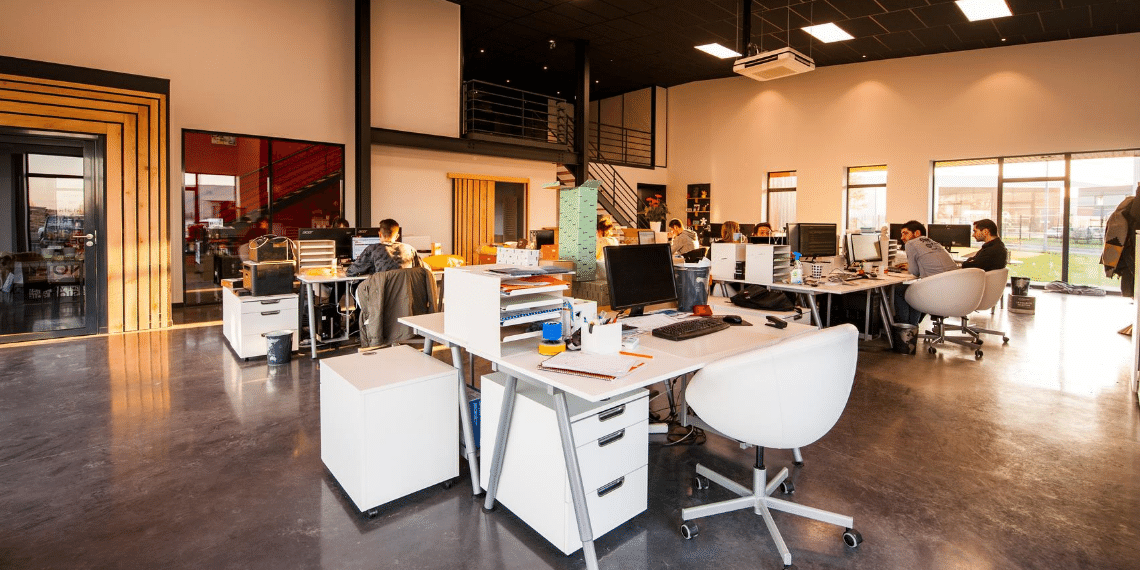
Prime Minister Scott Morrison declared on Tuesday that Australia would seek to “flatten the unemployment curve” caused by coronavirus, urging businesses to become “COVID-safe” so that they are on track to re-open by July.
The Government recently updated its Safe Work Australia website to provide industry-specific guidelines on the re-opening of workplaces to restrict the spread of Covid-19.
So, what are some of the forms in which these workplaces might alter should they be reopened in the coming months?
Q: What does COVID-19 mean for workplaces?
Much like 9/11 changed the way we travel, returning to work after the initial shut down around COVID-19 will mean that a lot of new measures will need to be implemented. These have far reaching impacts covering everything from wellness, social distancing, shared spaces, how and where we meet, mobility and agility.
Q: What are the changes required for office fit outs
You may need to redesign the layout of your office space and workflows to allow staff to remain at least 1.5 meters apart to continue performing their duties. This can be achieved by, where possible: restricting workers and others to certain pathways or areas and distributing furniture or plants to increase distance.
Consider floor and/or wall markings and signs for the recognition of distance specifications of 1.5 meters. If you alter the physical layout of the office room, the layout will allow employees to enter, leave and travel around the workplace, both under normal working conditions and in an emergency, without risk to their health and safety, to the extent reasonably practicable.
Q: Are there cheap fixes for the interim?
No-one really knows how long this will go on for, but it is safe to say we need to plan for the short term, medium term, and long-term future when it comes to renegotiating office design. The short-term fixes will be easy to implement, such as only occupying every second desk, or putting up screens between desks or different areas, adding signage and floor markers. Behavioural changes will be a critical part of workplace health and safety, such as encouraging clockwise circulation paths to minimise cross-contamination of anything airborne.
Medium term initiatives including adding more built rooms, whether they be for meetings, collaborative working, or individual use.
Longer term initiatives such as a higher use of telepresence to minimise travel will cost more, but the expense of setting this up may be offset against reduced travel costs.
Q: Can we keep hot desking?
If spaces, desks, and other workplace facilities are to be shared in the future there will need to be protocols in place for single use, ‘per day’ type scenarios. Businesses will need to be careful plan their staff’s return to work, looking at the characteristics of how their people work and why they would even consider coming back to the office in the first place.
As people across the world have been predominantly confined to their homes there has been a real resurgence of nostalgia. This speaks to a desire for a simpler, slower life and could even mean that we look to the past when it comes to office design, potentially ending up having private offices again with smaller, more individually allocated space, rather than so much shared space and amenity.
Q: Coraggio Board meetings – will these be face-to-face or online?
The strength of a Coraggio Board meeting is to be able to sit in your Board for a full day every month and assess challenges and work together to devise the right solutions for your business. Coraggio will encourage everyone back into face-to-face meetings as soon as we can. Going forward, we are planning to do a mixture of online and offline where necessary to ensure our Members health and safety.
Looking for furniture and office fit-outs for a post-COVID workplace? Keep it in the community. Contact our Members who specialize in Office Fit-out to be your partners. The Coraggio family are here to help.
- Andrew Scanton
Director, Client Based Solutions.
- Ben Lloyd
Director, Trinity Quality Interiors.
- Daniel Smith
Director, Leaf Architecture.
- Efim Elski
Managing Director, Grafton Projects.
- Keith Sheppard
Director, SOFC.
- Richard De Vries
Director, DCI Partnership.
